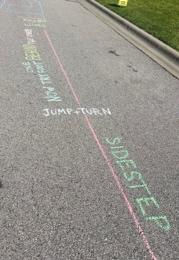Speech Therapy and Traumatic Brain Injuries
- All Care Therapies

- May 6, 2021
- 2 min read
Traumatic brain injury (TBI) results when the brain is damaged by an external force resulting with a disruption in the normal functioning of the brain. In order to identify the occurrence of a TBI, different battery assessments may be used. These include neurological exams, which consist of testing the individual’s learning, memory, and problem solving, and imaging testing that can include CT scans and/or MRIs.
The severity of TBI can range from mild to severe. Symptoms of a mild TBI include concussion, headache, neck pain, nausea, ringing ears, dizziness, and/or lethargy. In more severe forms of TBI, symptoms will include coma, memory loss, and death. Some other symptoms include reduced lifespan and behavior changes. TBIs may also lead to a variety of long and short-term issues involving cognitive functions (attention and memory), motor functions (weakness and impaired balance), and sensation and behavior issues (personality changes, depression, aggression).
TBIs can substantially be reduced with precautionary measures. Fall prevention is just one of these measures and includes talking to your doctor to determine risks or increase stability and strength of the lower body to improve balance and gait. Individuals should also take the necessary precautions to ensure the home is free of hazards such as cluttered walkways, loose wires, or rugs without non-slip backings. Additional precautionary measures include, practicing safety on the road, wearing a helmet when participating in activities that may lead to high impact force to the head, and creating and maintaining safe environments for children.
Speech and language treatment methods include:
Community support and integration
Computer based treatment
Constraint-induced language therapy is an intensive treatment program created to increase spoken language while discouraging (constraining) compensatory communication strategies, such as, gesturing and writing.
Melodic intonation therapy (MIT) utilizes musical elements of the voice, such as, melody, rhythm, and stress, to improve language output. MIT capitalizes on singing while engaging areas of the right hemisphere that are still capable of language expression.
Multimodal treatments
Augmentative and alternative communication
Promoting communication effectiveness of people with aphasia
Visual action therapy: this approach teaches patients to use gestures to describe visually absent objects.
Partner approaches
Conversational coaching
Supported communication intervention
Reading treatments
Multiple oral reading
Oral reading for language in aphasia
Supported reading comprehension
Reciprocal scaffolding treatment is conducted in a group setting and addresses communication skills utilizing natural language in meaningful and functional social contexts.
Script training
Syntax treatments
Sentence production programs for aphasia
Treatment of underlying forms
Word-finding treatments
Gestural facilitation naming
Response elaboration training
Semantic feature analysis treatment
Verb network strengthening treatment
Word retrieval cuing strategies

References:
Basic Information about Traumatic Brain Injury. (2019,March 6). Retrieved October 18, 2020, from https://www.cdc.gov/traumaticbraininjury/basics.html.
Murteira, A., & Santos, M. E. (2013). Language processing in right hemisphere stroke patients: Response speed and quality. Aphasiology, 27(2), 145–156. https://doi.org/10.1080/02687038.2012.699631
Traumatic Brain Injury TBI. (2019, June 25). Retrieved October 18, 2020, from https://medlineplus.gov/traumaticbraininjury.html#cat_51
https://www.asha.org/PRPSpecificTopic.aspx?folderid=8589934663§ion=Treatment. Retrieved October 19, 2020.




Comments